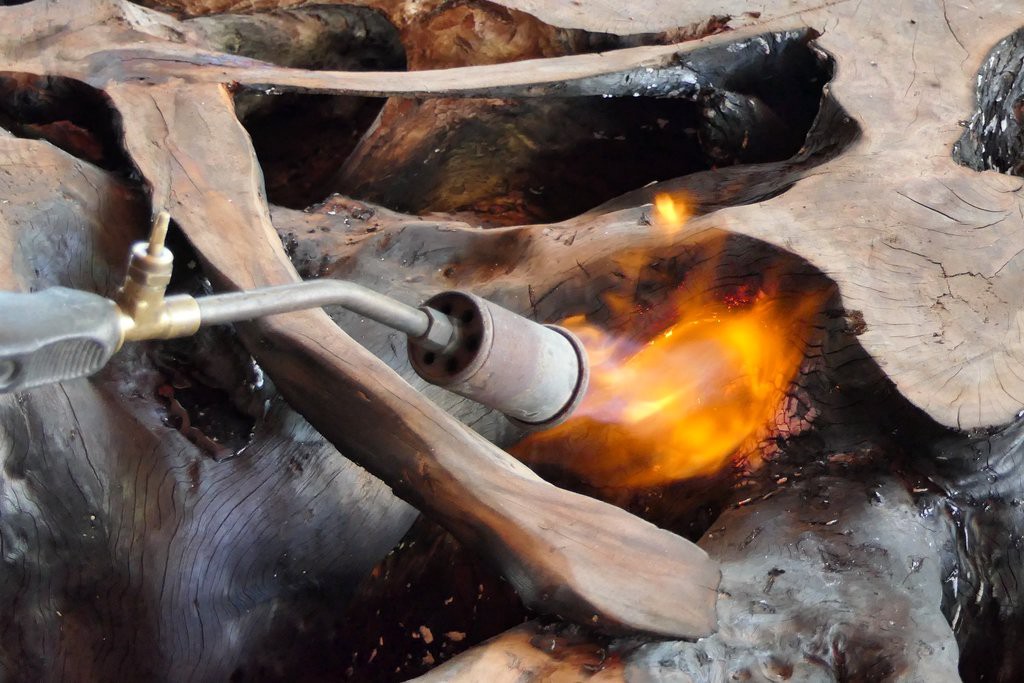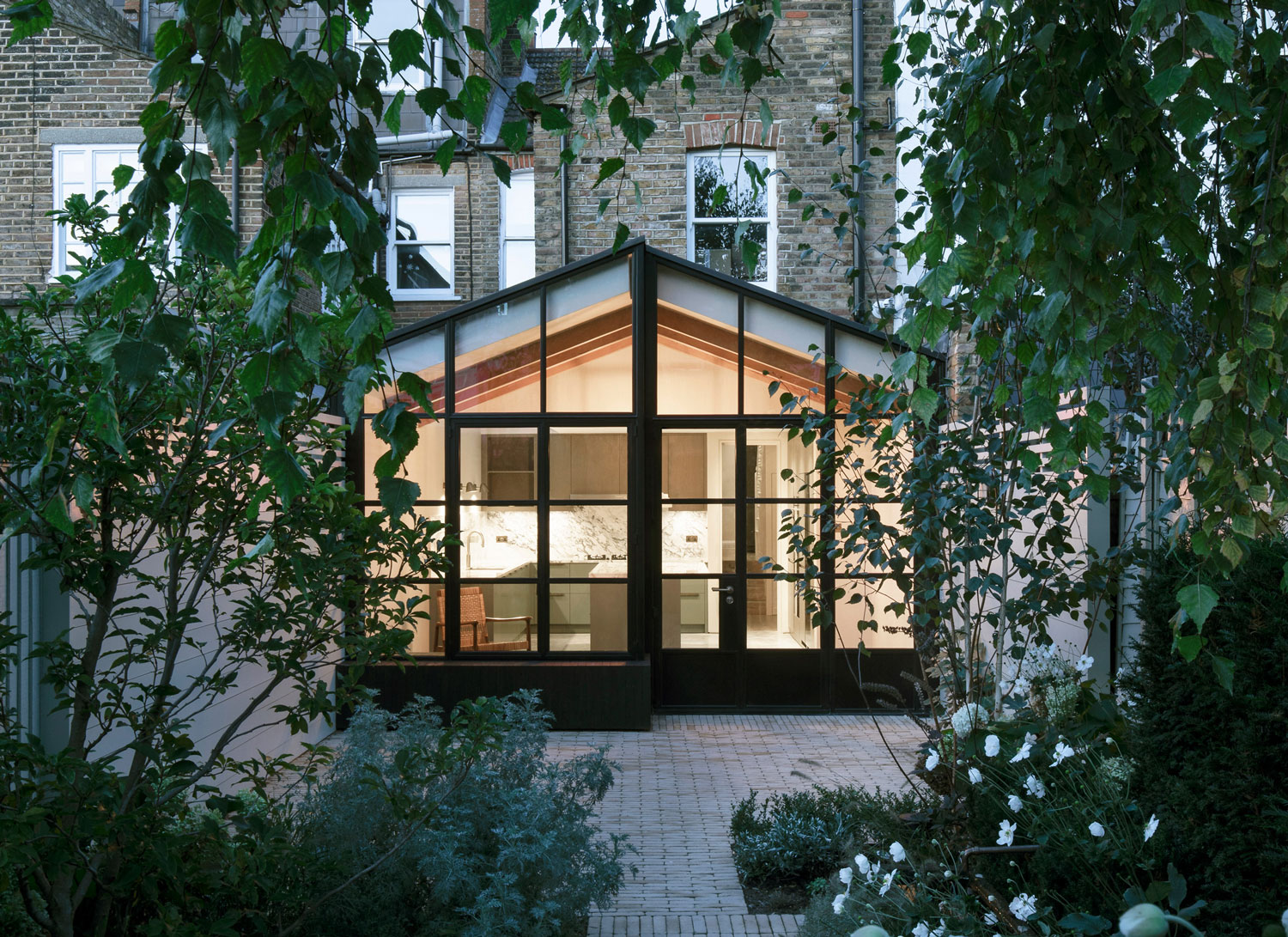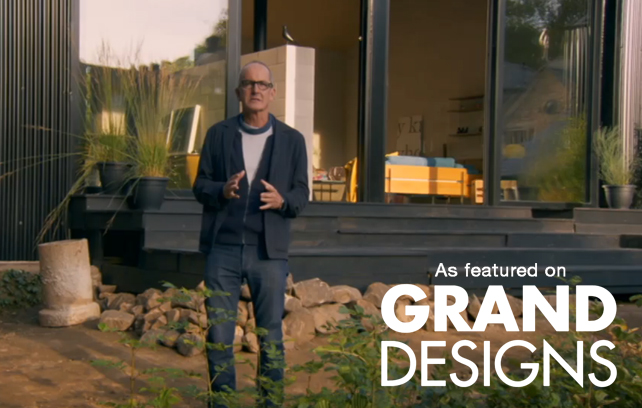Whether you’re ready to build a new wood deck, furniture, or wood wall paneling—or aim to spruce up existing ones—you’ll ultimately want both beauty and longevity. While chemical preservatives can be applied to untreated wood to prolong its life, and stain or paint can enhance visual appeal, these time-consuming treatments must be undertaken separately. So why not consider Yakisugi, a much-buzzed-about technique that allows any DIYer comfortable with using a blowtorch to fortify and beautify wood in a single process? Read on for the 411 on the technique that produces a burnt wood finish, plus tips for a successful application.

What is Yakisugi, and how is it used?
Yakisugi, an ancient Japanese technique for preserving wood with fire. Literally translating to “burnt cedar board” in English, Yakisugi traditionally involves scorching wooden boards with a torch or controlled fire, cooling the wood, softening the char with a wire brush, removing dust, and, if desired, topping the wood with natural oil. The process fortifies the wood (more on how below) and provides a matte black finish with elegant silver streaks, resembling obsidian rock.
Though examples of Yakisugi were seen as early as 700 A.D., the technique generally dates back to 18th-century Japan, where it was primarily applied to wooden boards used in exterior siding to weatherproof them and thereby prolong their life. Japanese cedar, called sugi, was the traditional wood species used because it was thought to produce the most pronounced charred effect.
In recent years, Yakisugi has been used on other softwood species in addition cedar for interior and exterior applications, both on wooden boards used in the construction of large surfaces, such as siding, decks, and wall paneling, and on smaller pre-built woodworks, such as tables, chairs, and dressers. It is prized not only for the protective qualities it confers on wood, but also the striking burnt wood finish it renders, which is versatile enough for both rustic and modern homes. While DIYers can create the finish simply by wielding a blowtorch, pre-made Yakisugi -treated woodworks abound, from coffee tables to decorative signs.
What are the benefits of a burnt wood finish?
Here’s how the Yakisugi treatment enhances wood:
- It resists moisture. The charring process leaves behind a two- or three-millimeter layer of char on the surface that shields underlying wood from water and water vapor, keeping it from eroding or absorbing moisture and swelling, warping, or rotting. This ability to waterproof wood is particularly useful for structures in moisture-prone spaces, such as garden benches or poolside lounge chairs.
- It fends off bacteria and pests. Yakisugi serves as an eco-friendly fungicide and pesticide for wooden siding, decking, fencing, and patio furniture. Fire-treating wood breaks down its cellulose, which contains nutrients such as sugar that bacteria and insects thrive on. Without cellulose, wood becomes inhospitable to pests, preventing fungal- and insect-related structural damage. With Yakisugi, there’s no need for chemical commercial wood preservatives.
- It reduces fire risk. As charring vaporises the softer cellulose layer of wood, it leaves behind the harder lignin layer, which requires a higher temperature flame and longer flame exposure time to burn. So there’s less chance of Yakisugi-treated wood catching fire, an important asset for pieces like patio tables used in close proximity to a grill or fireplace.
- It offers a rich color. Yakisugi can range in color from subtle charcoal-gray to dramatic jet black depending on the original color of the wood, the degree of scorching, and how much char you brush off. This makes it an excellent alternative to black or dark gray wood stain or paint. A jet-black patina is ideal for statement-making exteriors or on surfaces in contemplative spaces, such as accent wall paneling in a bedroom, while a charcoal hue would suit spaces where more visibility is important, such as a deck.
- It gains dynamic texture. The texture of Yakisugi may be cracked or scaled depending on the intensity of the burning, the natural striations in the wood, and the arrangement of the boards on the surface. A traditional arrangement of one board stacked atop or alongside another offers a more seamless look, desirable in rooms where polish is desired, such as wall paneling in a formal dining room. If going for a more striking, visually variegated look, such as for a desk in a craft room or art studio, a staggered arrangement of boards adds depth and dimension to the burnt wood finish.









